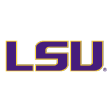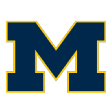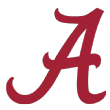Which future high draft picks turned heads at Future Stars Series?
The Future Stars Series held its annual International Week tournament over the holiday weekend at the Dodgers/White Sox stadium in Glendale, Arizona, featuring two very solid rosters mostly comprising 2019 and 2020 draft prospects with a sprinkling of international free agents mixed in as well. I attended all three games of the event and thought these were the best and/or most intriguing players between the two teams.
Panamian-born right-hander Daniel Espino, who now lives in Statesboro, Georgia, is the most famous name in the high school pitching crop for 2019, having hit 99 mph earlier this summer at the Perfect Game All-American Classic at Petco in a one-inning stint. He dialed it all the way back to 92-97 for a longer outing in Glendale, but what was more impressive was that he repeated his delivery and showed he could throw the fastball for strikes and work with it to both sides of the plate. Espino's arm action was a real concern at the start of the summer, but he's cleaned it up, and while it can get long and he needs to avoid coming across his body, he's repeating it enough now to foresee future above-average command. He paired the fastball with a hard curveball at 77-82 that flashed plus. I'd be surprised if he weren't one of the first two or three high school pitchers taken next June.
Mick Abel projects as a top-10 pick in 2020, as the 6-foot-5 right-hander from Cedar Mill, Oregon, has been up to 95 at showcases already and has a great delivery that gets him on top of the ball very well at release. In Arizona, he was 89-94 with good life up in the zone and showed feel for a power curveball at 82-83 with late, sharp break down and away from right-handers. He's very projectable as well and I wouldn't be shocked to see him sitting mid-90s by his draft year, although even at his present velocity he'll be a top prospect in the class because of his frame, delivery, and potential out pitch in the breaking ball.
Las Vegas right-hander Aaron Roberts, a Cal commit who also plays the infield corners, was impressive in a short stint on the mound, sitting an easy 91-93, getting on top of the ball well and turning over a promising changeup as well. He has a good arm slot for a curveball but needs more reps to develop his feel for it.
Minnesota lefty Drew Gilbert was 89-91 with some sink to it, but it was his curveball that really stood out to me -- up to 75 with what looked like very tight spin, a future plus pitch that he was willing to throw on the inner third to lefties as well as spinning it away from them. The 2019 graduate is committed to Oregon State but should be more than good enough to go on Day 1.
Will Frisch is Gilbert's teammate at Stillwater HS, and is also committed to Oregon State. Frisch, a right-hander, threw in the first game and attacked hitters with a 90-94 mph fastball and solid 79-82 mph breaking ball, coming from a low ¾ slot and short arm action that might give him trouble staying a starter long term. I'd like to see more sink from the fastball, which would be typical from the lower slot.
Glenallen Hill, Jr., was probably the highest-profile position player in the event thanks to his very explosive tools and his name -- his father was a big, physical power hitter, and a man ahead of his time, as he struck out 211 times in 530 PA as a 20-year-old in A-ball in 1985. The younger Hill is smaller but much faster, average out of the box but probably a 70 runner underway, if not faster, and shows excellent bat speed, especially from the left side. His timing at the plate was off at the Future Stars Series, however -- he was late getting his hands started and behind a lot of pitches he should have squared up. He played short and second but given his speed and erratic hands he might profile best in center.
Shortstop/third baseman Tyler McKenzie (Loxahatchee, Florida) also showed some very intriguing tools but didn't get results at the plate. He's an instinctive player with outstanding hands for the infield and is athletic like his older brother, Cleveland pitching prospect Triston McKenzie. Tyler was behind decent fastballs all weekend, however, and is going to have to show better bat speed or that he can start his hands quicker. The speed he shows in workouts wasn't showing up in games either. He's committed to Vanderbilt.
Brock Jones is one of the top two-sport players in the 2019 draft class, starring at safety and as an outfielder and pitcher for Buchanan HS near Fresno, California. Jones is a plus runner who bats from the left side and has a quick, slashing stroke that doesn't take full advantage of his strength. I think he's a power/speed guy if someone gets him to use his legs more and put some loft in his swing, which can be very flat. He's still uncommitted to any college, although several major Division-I schools appear to have made offers.
Canadian catcher/first baseman Blake Buckle made consistent hard contact over the course of the three games and showed some extra-base power, and even though he's a left-handed hitter he didn't look worse against southpaws. He's a man in search of a position -- although he catches, he has a 40 arm and he's not really agile enough to profile behind the plate, but he's more than fine at first base and someone might just bet on the bat playing at any position.
Dilan Rosario might be the guy from Puerto Rico to watch for 2019, another in a line of shortstops from the island who go high in the draft. He showed above-average speed and impressive hand strength, driving a triple the other way against a lefty in his most impressive result, and shows good enough actions in the field to profile at short in the long run. He's also young for the class and won't turn 18 until next July. Rosario, Johzan Oquendo -- a converted outfielder who was 88-91 with a 79-84 mph slider in Arizona -- and outfielder Adrian Colon, all three of whom were at the Future Stars Series, will be among the top prospects from the island in the class.
Joel Ibarra was one of the top international prospects at the event and would already be signed by somebody if it weren't for the recent kerfuffle over the rules around MLB teams signing Mexican amateur players, including a temporary moratorium. Ibarra played the infield and pitched, showing more promise on the mound if he were to focus on it full-time -- he has arm strength, sitting 86-88, with some feel for a curveball, but pitches like an infielder, right down to the hesitation midway through his delivery.







